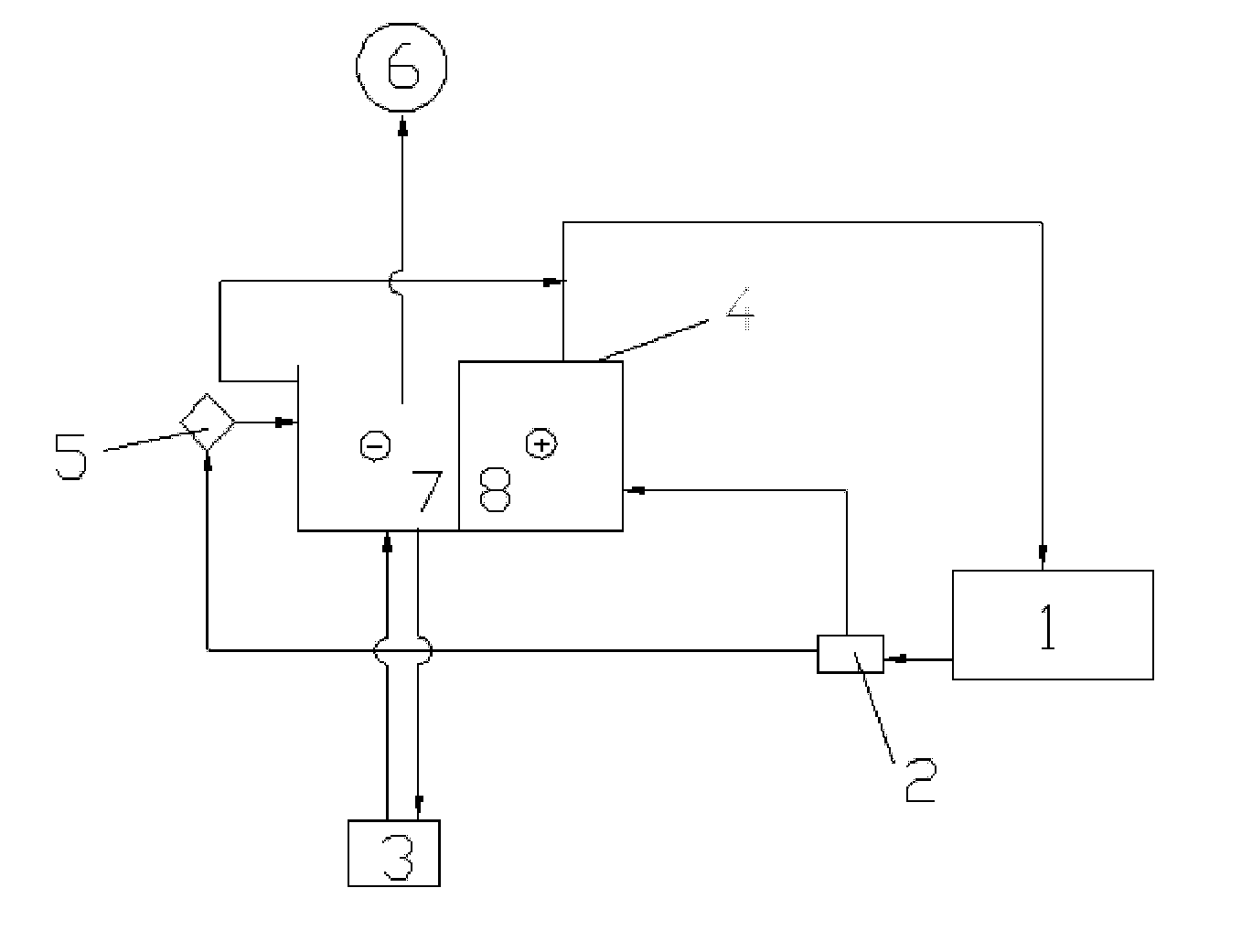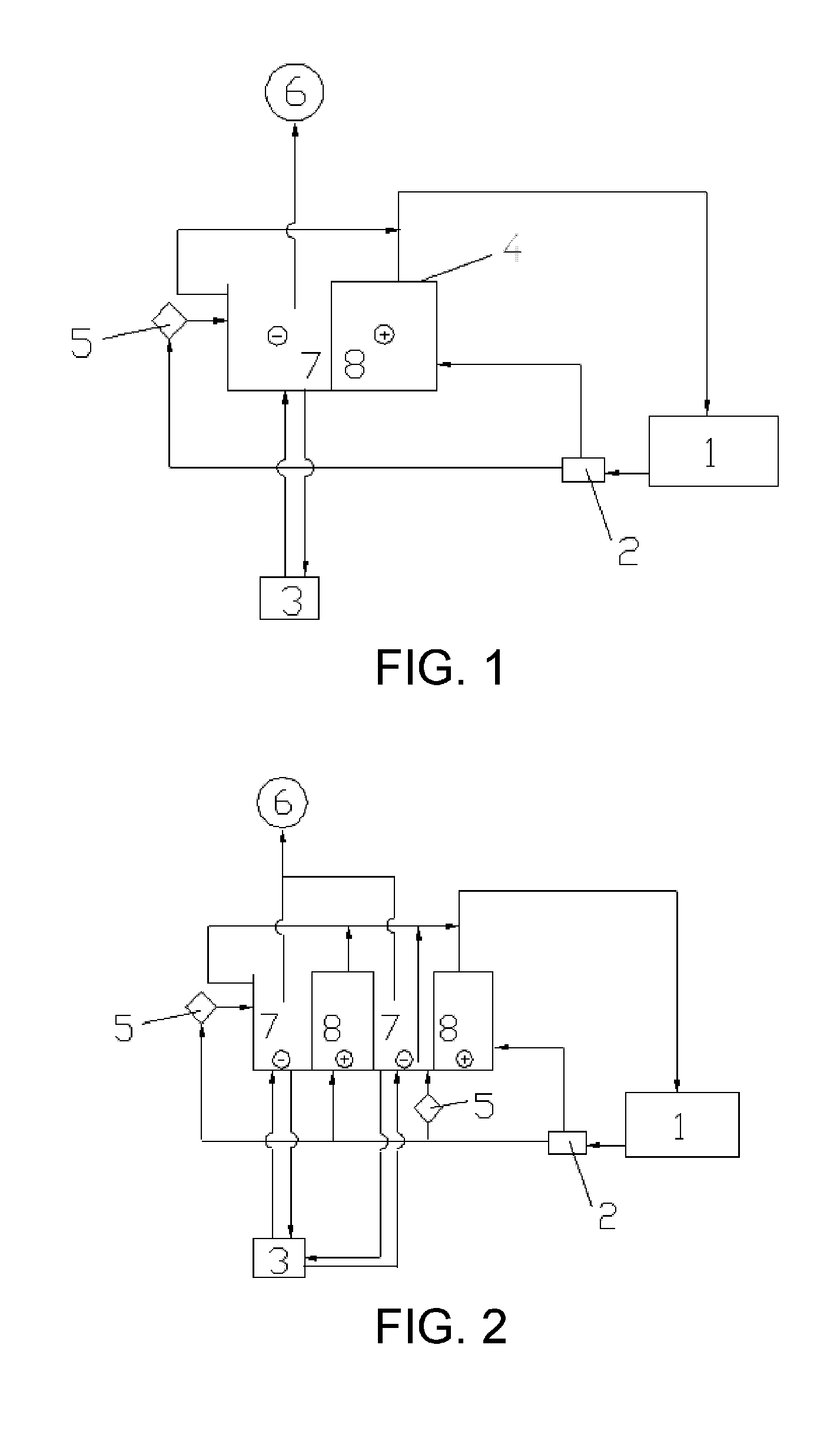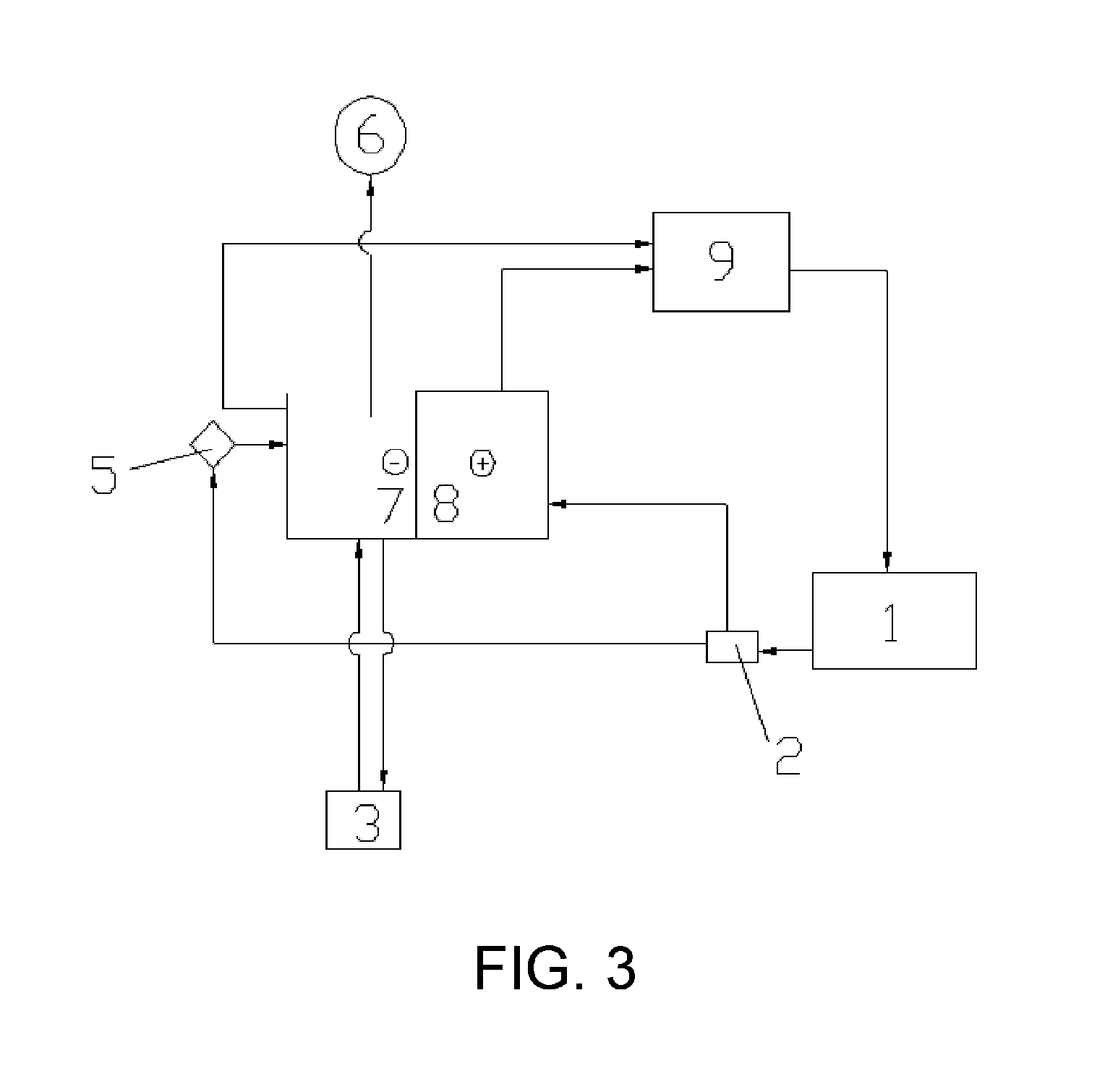Method for electrolytic recycling and regenerating acidic cupric chloride etchants
a technology of acidic cupric chloride and electrolysis, which is applied in the direction of process efficiency improvement, printed circuit manufacturing, electrolysis components, etc., can solve the problems of overflow of excess etching, slow down the etching rate, and non-compliance with industrial production requirements, so as to reduce environmental impact, improve manufacturing safety, and consume less raw materials.
- Summary
- Abstract
- Description
- Claims
- Application Information
AI Technical Summary
Benefits of technology
Problems solved by technology
Method used
Image
Examples
embodiment 1
[0083]The electrolysis electrolytic recycling and regenerating apparatus used in this embodiment is illustrated in FIG. 1.
(1) In combination with the method above, according to the designated components and their mixing ratios as shown in Table 1 and 2 below, the etchant was prepared and the automatic detection and charging control machine was set up, and the etching operated was started. Etchant tank 1 was connected to the vacuum fluidic aerating device (not shown in FIG. 1); the vacuum fluidic aerating device comprises a liquid intake pipe, an acid-resistant pump, an air duct connected to the liquid intake pipe close to the acid-resistant pump, and a liquid outlet pipe; both the liquid intake pipe and the liquid outlet pipe were connected to the etching tank.
(2) The etchant waste overflowed from etchant tank 1 was collected and treated by water-oil separator 2; the etchant waste contained products of copper-etching, such as ferrous chloride and cuprous chloride.
(3) The treated etc...
embodiment 2
[0085]The electrolytic recycling and regenerating apparatus employed in this embodiment is illustrated in FIG. 2. Main differences between FIG. 2 and FIG. 1 are as follows: the electrolysis tank in FIG. 2 was separated by three electrolytic diaphragms into four chambers, which includes two cathode chambers 7 and two anode chambers 8. A cathode board is installed in each cathode chamber, and an anode board is installed in each anode.
[0086]The four chambers operate simultaneously during electrolysis.
[0087]The electrolytic recycling and regenerating method of this embodiment was the same as embodiment 1, except that:
(1) the etchant tank was not connected to the vacuum fluidic aerating device;
(2) the electrolytes from the cathode chamber 7 and anode chamber 8 were separately transferred to the etchant tank via two liquid outlet pipes.
[0088]The aqueous oxidant mixture used in the embodiment was comprised of 25 wt % of NaClO3, 12 wt % of NH4Cl, 1 wt % of NaCl, and 62 wt % of water.
[0089]T...
embodiment 3
[0090]The electrolytic recycling and regenerating apparatus employed in this embodiment is illustrated in FIG. 3.
(1) In combination with the method above, according to the designated components and their mixing ratios as shown in Table 1 and 2 below, the etchant was prepared and the automatic detection and charging control machine was set up, and the etching operated was started. The aqueous oxidant mixture used in the embodiment was comprised of 15 wt % of NaClO3, 20 wt % of NH4Cl, and 65 wt % of water.
(2) The etchant waste overflowed from etchant tank 1 was collected and treated by water-oil separator 2; the etchant waste contained products of copper-etching, such as ferrous chloride and cuprous chloride.
(3) The treated etchant waste was introduced to an electrolysis tank with a built-in electrolytic diaphragm. One part of the etchant waste was directly transferred to anode chamber 8, and the other part of the etchant waste was mixed with hydrochloric acid, ferric chloride and wat...
PUM
| Property | Measurement | Unit |
|---|---|---|
| Fraction | aaaaa | aaaaa |
| Fraction | aaaaa | aaaaa |
| Fraction | aaaaa | aaaaa |
Abstract
Description
Claims
Application Information
 Login to View More
Login to View More - R&D
- Intellectual Property
- Life Sciences
- Materials
- Tech Scout
- Unparalleled Data Quality
- Higher Quality Content
- 60% Fewer Hallucinations
Browse by: Latest US Patents, China's latest patents, Technical Efficacy Thesaurus, Application Domain, Technology Topic, Popular Technical Reports.
© 2025 PatSnap. All rights reserved.Legal|Privacy policy|Modern Slavery Act Transparency Statement|Sitemap|About US| Contact US: help@patsnap.com



